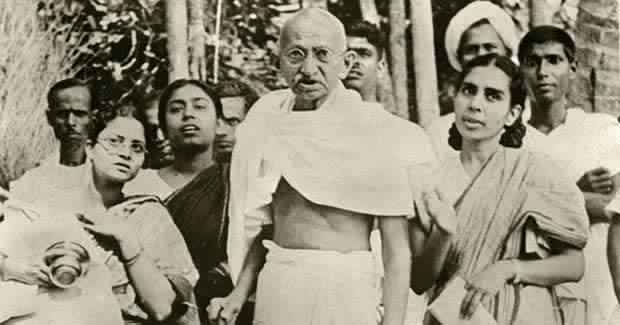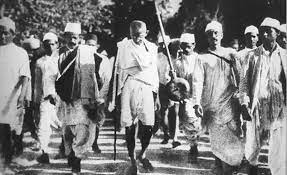The Harijan Upliftment Movement in Odisha during the National Freedom Struggle holds significant importance in the history of India. The movement aimed to uplift and empower the Harijans, commonly known as the untouchables or Dalits, who were long marginalized and subjected to extreme social discrimination in the Indian society.
The term ‘Harijan’ was introduced by Mahatma Gandhi, who strongly advocated for the rights and dignity of the Dalits. He believed in their potential and strived to eradicate the prevalent caste-based prejudices. The Harijan Upliftment Movement in Odisha was a part of his larger vision for a just and inclusive society.
During the National Freedom Struggle, the untouchables in Odisha faced acute discrimination and were often denied even basic amenities such as proper housing, education, and healthcare. They were subjected to inhumane practices such as untouchability, wherein they were not allowed to enter temples, wells, or even touch objects used by people from higher castes.
The primary objective of the Harijan Upliftment Movement in Odisha was to create awareness about the rights and dignity of the untouchables and work towards their social, economic, and political empowerment. Various organizations and individuals participated actively in this movement to bring about a positive change in the lives of the Dalits.
One of the prominent figures leading the movement in Odisha was Pandit Gopabandhu Das, a social reformer, and freedom fighter. He established the Samaja, a popular Odia newspaper, which played a crucial role in spreading Gandhi’s message of equality and upliftment of the untouchables. Through the Samaja, Das highlighted the issues faced by the Harijans and advocated for their rights.
The Harijan Sevak Sangh, an organization founded by Mahatma Gandhi, also played a significant role in the upliftment movement in Odisha. The Sangh focused on providing education, healthcare facilities, and guidance to the Harijan community. It established schools, dispensaries, vocational training centers, and hostels in different parts of Odisha to ensure equal access to opportunities for the untouchables.

You can read our another post on Lal Bahadur Shastri Jayanti
Besides education and healthcare, efforts were made to economically empower the Dalits, mainly through the promotion of cottage industries and small-scale enterprises. The movement aimed to provide skills training and financial support to enable the Harijans to become self-reliant and break free from the cycle of poverty and oppression.
The movement gained momentum with the active involvement of the local Odisha people, who recognized the importance of equal rights and social justice. Many individuals from higher castes volunteered to teach the untouchable children, breaking the centuries-old barrier of untouchability.
The practice of untouchability was also challenged through various non-violent protests and satyagrahas. Individuals from all sections of society participated in these protests, showcasing their commitment to eradicating discrimination and creating an egalitarian society.
The Harijan Upliftment Movement in ODisha during the National Freedom Struggle brought about a significant change in the mindset of people and helped in breaking the shackles of caste-based discrimination. It created a platform where people could come together, irrespective of their caste or social background, to fight for justice and equality.
Today, the movement’s impact can still be seen in the improved social status and increased awareness among the Dalits in Odisha. Though the work is far from complete, the efforts made during the National Freedom Struggle have paved the way for further advancements in the upliftment of the Harijan community.
The Harijan Upliftment Movement in Odisha serves as an inspiring example of collective action and social reform. It highlights how a united effort, driven by the principles of equality and justice, can break through barriers and bring about meaningful change. The movement elicits hope for a future where no individual faces discrimination based on their caste, thus upholding the principles of a truly democratic and inclusive society.
More: Wanted to download Odishashop.com visit here

Write A FAQ For Harijan Upliftment Movement in Odisha During National Freedom Struggle
What was the objective of the Harijan Upliftment Movement in Odisha during the National Freedom Struggle?
The objective of the Harijan Upliftment Movement in Odisha during the National Freedom Struggle was to uplift and empower the marginalized Harijan (untouchable) communities by fighting against social discrimination, caste-based oppression, and advocating for their rights and dignity.
Who were the key leaders of the Harijan Upliftment Movement in Odisha?
Prominent leaders of the Harijan Upliftment Movement in Odisha included Gopabandhu Das, a social reformer and writer; Harekrushna Mahatab, a political leader; and Nilakantha Das, a social activist. These leaders actively worked towards promoting equality and social justice for the Harijans.
What were the major initiatives undertaken during the Harijan Upliftment Movement in Odisha?
The Harijan Upliftment Movement in Odisha focused on various initiatives such as opening schools and hostels for Harijan children, providing vocational training and employment opportunities, organizing awareness campaigns against social discrimination, and advocating for legal rights and reservation policies for the upliftment of Harijans.
How did the Harijan Upliftment Movement contribute to the National Freedom Struggle in Odisha?
The movement played a significant role in the National Freedom Struggle by mobilizing the Harijan communities against British colonial rule and empowering them to demand their rights and equality. The movement also created a sense of unity among different social groups, strengthening the overall fight for independence.
What was the impact of the Harijan Upliftment Movement in Odisha?
The Harijan Upliftment Movement brought about a positive change in the lives of the Harijans in Odisha. It helped in eradicating some of the social evils like untouchability and caste discrimination. The movement also contributed to the overall social transformation of the region, creating a more equitable and inclusive society.
